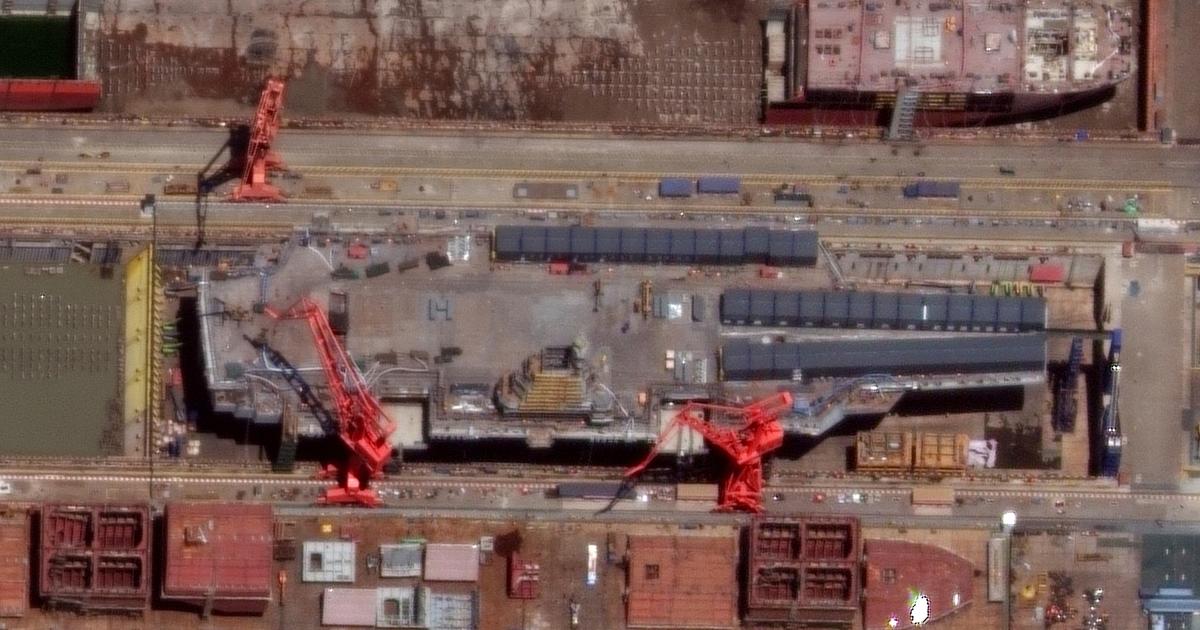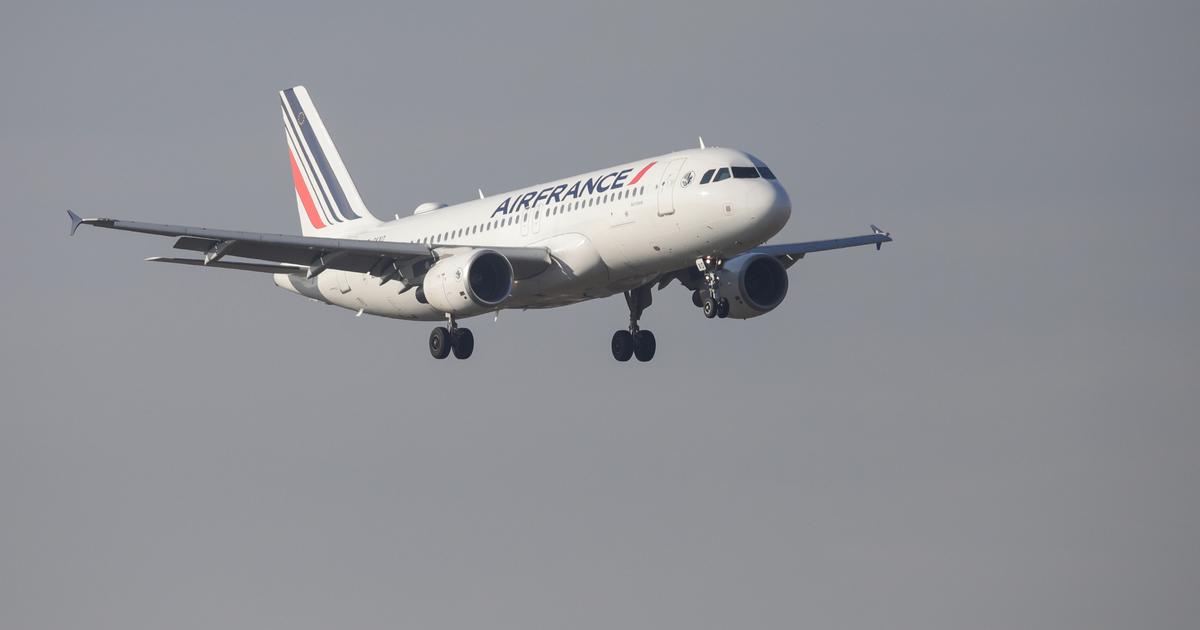Brazil's last aircraft carrier lies at the bottom of the sea after an amazing odyssey that has lasted six months and includes crossing the Atlantic and back in tow.
Some 15,000 kilometers traveled by a ship that can be summarized in figures: 265 meters in length, 33,000 tons in weight and the capacity to transport 40 aircraft.
Guarded by a frigate, she was offshore in a straight line off Recife (Pernambuco).
The largest ship in the Brazilian fleet was pure scrap.
An environmental bomb with tons of asbestos and other toxic components.
Dispose of what was left of the aircraft carrier
São Paulo
—the hull, the engine room…— has been a true nightmare for the Brazilian Navy.
This Friday afternoon she sank it 350 kilometers out to sea, in an area more than 5,000 meters deep.
Military divers planted the explosives with which she was blown up in Brazilian waters, on the border with international waters.
The ship could no longer anchor;
she was so run down that she would sink.
She barely kept herself afloat after half a year without finding a port that would accept her for scrapping.
The helmet "is prepared to receive the explosive charges," the journalist specializing in Defense affairs Valter Andrade, part of a network that follows the crisis minute by minute, explained by phone from Pernambuco hours before.
The veteran photojournalist was concerned above all about the engine room, which concentrates the toxic elements.
The effects of controlled blasting can be devastating for the environment, critics warned.
"It could be a mini Chernobyl," said Andrade.
Already at night, he described the collapse of "irresponsibility."
The NGO Basel Action Network even appealed to President Luiz Inácio Lula da Silva, who did not reply.
His first month in power has been extremely eventful, with a coup attack and the sudden dismissal of the head of the Army.
And now, the aircraft carrier, the largest and last of his fleet.
"We urge President Lula, as Commander-in-Chief of the Armed Forces, to immediately stop this sinking plan," said Jim Puckett, director of this NGO dedicated to monitoring the transport of toxic materials, in a note.
"If the Navy dumps this highly toxic ship into the wild depths of the Atlantic Ocean, it will violate three environmental treaties."
That it required a crew of almost two thousand sailors gives an idea of the size of the mass.
The case of
São Paulo
highlights the complexity of recycling warships or any large vessel.
And it shows that sometimes cheap is expensive.
But let's go back to the beginning.
This is a second-hand ship that Brazil bought from France in 2000. Launched in 1959 under the name of
Foch
, she was at a very good price.
The current events are less surprising to those who knew that she had a sister ship, the
Clemenceau
, of the French Navy, which also ended up wandering around several countries because of asbestos.
She ended up in a British shipyard.
The Brazilian's path to scrapping really began to go wrong last August.
The Turkish company Sök Denizcilik had bought it for two million dollars (1.9 million euros) with the plan to dismantle it in a shipyard in their country.
Pulled by a tugboat, the aircraft carrier headed east until, about to enter the Strait of Gibraltar and in the heat of a campaign by environmentalists, the decision came that would change its final destiny.
Turkey withdrew the docking permit after being alerted by the Basel Action Network and other NGOs that ensure that the ships are disposed of in a sustainable manner.
The first estimates that she was carrying 300 tons of hazardous materials.
"The most surprising moment for me was when I saw the aircraft carrier turn around and return to Brazil," confesses another journalist, Jorge de Souza, who narrates the odyssey in detail in his column
Histórias do Mar,
in UOL.
"Sources told me that he could return but I knew that it was a complex and very expensive operation."
Laws and contracts regulate the end of life of these vessels.
After the sale to the Turkish company, the São Paulo underwent a partial inspection that detected almost ten tons of asbestos in the structure.
"Eighty times less than her sister ship had," says De Souza.
Several environmental NGOs organized a campaign for Turkey to deny her entry.
So it was.
The news caught him at the gates of Gibraltar.
In compliance with the law, she undertook her return to Brazil.
For the next three months, its owners kept it sailing in circles off the port of Suape (Pernambuco, Lula's home state, by the way) waiting for the Navy to authorize the docking.
Permission never came.
Sök Denizcilik ended up spending an unexpected fortune.
And he got fed up.
She stopped paying the tugboat, the insurance and got rid of the aircraft carrier.
The Navy came to the rescue two weeks ago and once again assumed control of the vessel, stressing that the company that owns it is not exempt from responsibility.
Pulled by a military tug and closely watched by the frigate
União
, she was taken out to sea.
Meanwhile, the authorities were looking for a solution to this delusional headache involving a ship that years ago suffered an explosion that killed three sailors.
The mole is an environmental hazard and a risk to other boats circulating in the area.
The last few days have been hectic.
The Ministry of Defense maintained that there was no viable alternative to controlled blasting while the environmental surveillance agency, Ibama, pointed out that this decision went against the opinions of its technicians and asked the military for information to "evaluate alternatives to mitigate, repair and safeguard the environment after the eventual shipwreck”.
Emerson Miura also follows the crisis minute by minute.
He even tried to bid for the ship because his dream was to moor the
São Paulo
to turn it into a museum, as they do in the United States, he says.
The plan pursued for years with his wife, now deceased, was to preserve a historical heritage and rewrite the history of the aircraft carrier.
Or, as this former airman who runs the Sao Paulo/Foch Institute says, it was "to save the reputation of the Navy."
He wanted to open it up to visitors, turn it into a tourist attraction and a pole of economic development.
The unfortunate end of the ship marries a career that was quite useless for the Brazilian Navy.
“In her 17 years of service, she did not sail for even one year.
She suffered multiple issues because she was outdated.
It was almost a donation from France.
Already then they agreed on what the destruction would be like, in a certified shipyard, etc.… I think that in the Navy they breathed a sigh of relief when they sold it”, says the journalist De Souza.
Those connoisseurs of the sister ship precedent may have knocked on wood.
In recent days, a small plane has flown over the aircraft carrier every morning and every afternoon to inspect it, reveals photojournalist Andrade.
He also had the mission of filming the explosion and how the sea swallowed the last aircraft carrier in Brazil.
The Navy has reported the sinking in a note in which it "pays legitimate reverence to the former
São Paulo
aerodrome ship ."
You can follow CLIMATE AND ENVIRONMENT on
and
, or sign up here to receive
our weekly newsletter















